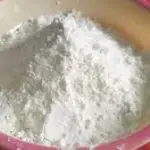How To Tell If Salmon Has Gone Bad

How to tell if salmon is bad? This is one important question that crops up in your mind whenever you go to buy or cook salmon for yourself or for your family. I ahve seen people asking this questions so many times in forums. So, I decided to write a post about this for the benefit of my readers.
Well, salmon is one of those foods that are very healthy when fresh and properly prepared. It is lean and packed with nutrients that you need for a rational diet. It is a good alternative to fatty meat if you want to lose a few pounds. However, nobody wants to lose weight by gorging and then vomiting stale salmon, so let’s talk about how to tell if cooked salmon is bad.
How do you know if cooked salmon has gone bad and should not be eaten? That’s the question I want to answer here, and I’ll talk about both cooked and uncooked varieties. You need to know if the salmon is about to spoil or has already spoiled. I want to help you avoid unnecessary toilet visits to remove your food from the system. We would all do well to live without food poisoning and this practical guide will help you do just that. If you see mould, discoloration, slimy residue or strange growths, don’t even think about eating the salmon! If you do that you will do that at your own peril. So, just throw out the bad salmon into the garbage bin.
Benefits of eating salmon
Salmon is great because the nutritional properties of this delicious fish are also impressive. For example, it can give a radiant glow to your skin and make it healthy. Secondly, it is a great stress buster. Thirdly, it give your hair new sparkle and keeps it healthy. Fourthly, it boosts up your energy. Lastly, it helps your bones and heart.
Salmon can also be used in many recipes. But when salmon spoils, you really don’t want to eat it anymore!
Why it’s important to recognize spoiled salmon
A few years ago, before I started cooking professionally, I was on summer vacation with my family. We had decided to use our vacation to eat healthier, and since we were going to eat fish, salmon was an obvious choice. The only problem was that the refrigerator in our cabin didn’t work properly, so we ended up with a piece of slightly darkened salmon that we were going to eat anyway.
Bad choice. In the end, all four of us had severe food poisoning! The moral of this story is this: never eat spoiled meat or fish that has not been properly refrigerated. If you do, you can get illnesses ranging from mild – like abdominal pain – to severe – like parasitic infections like trichinosis.
This is because if meat or fish is not stored properly – by the manufacturer, in the store or by yourself – bacteria and parasites can spread. Although some of the microbes are destroyed when the salmon is cooked, others remain in the fish, along with the toxins released, that make you sick.
How do you know if salmon is bad?
While it is very important to know how to recognize if salmon is bad and harmful for human consumption, it is not always easy! Many of us are not used to cooking salmon regularly since it is an expensive item and sometimes not easily available. This can mean that we don’t actually know what salmon tastes, looks and smells like.
The good thing is you can learn after researching all the tell-tale signs and symptoms of bad salmon. Here’s a quick and easy guide on how to tell the bad fish from the good fish!
Dark spots are always a sign that your salmon is bad. If it shows any of the above symptoms, throw it away immediately!
Visual signs of bad salmon, if they are there, are super easy to spot! Our eyes are one of our most important and powerful senses. However, they are not always present if you are looking for the discoloration, mould or grease which may take some time to develop, but in spite of the absence of such visible signs, salmon can still be bad! What other ways are there to tell the good from the bad?
Visual signs of spoiled salmon
Under normal circumstances and at its best, salmon should look pink and appetizing – yes, even when raw! The flesh of the fish should be bright pink and dotted with fine white lines – the accumulated fat of the animal that is so beneficial to our nutritional health. This means the salmon is fresh and ready to eat!!! But what does bad salmon look like?
Bad salmon has a cloudy, gray color, as opposed to the bright, pink color of fresh salmon. If it looks grayish, throw it away!
If you bought the salmon as a whole fish, check the eyes. Healthy salmon eyes should be white, have a dark pupil, and bulge slightly. If they look sunken or whitish, the salmon is spoiled.
For those who love whole salmon, make sure the gills are clean. Sticky, white or stringy gills are always a dangerous sign.
The smell of salmon spoilage
We, human beings, generally to be very visual creatures and often don’t pay much attention to our sense of smell. But as a beginner, you need to learn to use this sense constantly. Your nose is particularly good at detecting bad salmon before there are any visible signs of it. It can prevent you from getting into trouble!
It may sound obvious, but fish — even if it’s perfectly fresh — always smells a bit fishy. What does fresh and normal salmon smell like? How can you detect if salmon has gone bad just by smelling it? It may seem like an impossible task, but it’s actually not that difficult. Here are the usual symptoms:
Normal and safe salmon should always smell fresh, even if it has a slight fishy smell. Your nose knows when you smell really fresh fish because it reminds you of the sea: mild, slightly salty, and just, you know, like the sea.
When salmon goes bad, the proteins in the flesh start to break down with bacteria, parasites and fungi. This noticeably changes the flavor.
Bad salmon has a distinctly sour smell, almost like ammonia.
Rotten salmon has a pungent fishy smell. You won’t eat it, believe me!
Use your nose and trust it! Our olfactory instincts have been with us for thousands of years: they definitely know how to take care of our bodies.
How to tell if salmon has gone bad? Check again
Touch your arm with your other hand. The arm seems to be firm, isn’t it? When you press it, it doesn’t seem to dent and fall apart immediately. The same is true for fresh salmon, which is safe to eat. After all, it is meat!
It doesn’t really matter whether you bought the salmon whole, in small pieces or just a can of salmon: the texture is usually a good indication of whether the salmon is spoiled or still good enough to be eaten. But how to ensure that you are not going to eat something that can make you sick?
Take the salmon and if you can’t tell by smell or sight whether it’s rotten, use your fingers!
Press the flesh. Be careful to do this lightly, not as if you were trying to cut the salmon with your bare hands!
If the meat pulls back when you remove your fingers, it’s safe to eat!
However, if the flesh of the salmon continues to dent after you stop squeezing it with your fingers, it’s best not to eat it. It’s probably already bad salmon.
If the fish feels slimy and sticky when you touch it, throw it into the bin.
The same goes for a brittle texture rather than a firm one. Don’t eat it!
But how do we know if frozen salmon has gone bad? What about chilled salmon? First of all, you will have to check whether the salmon is dried out. if there is moisture around the salmon, you should not eat it. If you decide to thaw frozen salmon, it is better to do this the night before cooking and never on the kitchen table. This will prevent bacteria and germs from spreading in the fish and harming you with their toxins.
The key is to use more than one sense to distinguish good salmon from bad salmon. Get in touch with your food using all your resources so you can take better care of your body, your health and your family.
How to store salmon so it doesn’t spoil
That’s fine, but you really wanted to eat that salmon. What should we do? Unfortunately, you can’t fix bad salmon to make it fresh to eat again. But you can preserve it better next time! Here are some quick tips for doing that so that you don’t get into trouble anymore:
First, buy the freshest salmon you can find. It’s always better to buy salmon from a reputable seller: you need to be able to trust the source of the food. Check the store for any dirt or strange smells.
Ask around. Find out where the fish comes from and when it was caught. A reputable seller usually knows.
If you buy salmon, go home and store it. That way you can minimize the risk of spoilage.
To store the salmon, wrap it in cling film, place it in a resealable container and close the lid. Then place the container in the refrigerator or freezer, away from other foods.
Do not leave the raw salmon on the counter for more than a few minutes.
Salmon will keep for up to 2 days in the refrigerator. It will stay safe for 1 or 2 months in the freezer. However, it is always best to eat the salmon as soon as possible.
How to tell if salmon is bad and should not be eaten
Wrapping up
Now that you know how to tell if salmon is bad, you should have no problem in detecting whether it’s good or bad. You’ll never have to deal with the unwanted illnesses associated with bad salmon again! So relax, cook your favorite healthy salmon recipe and enjoy your gourmet meal with your whole family.








